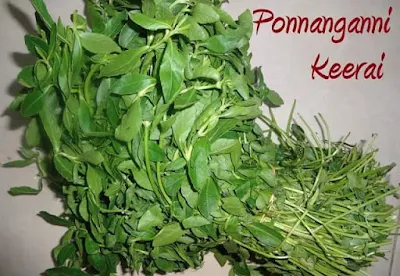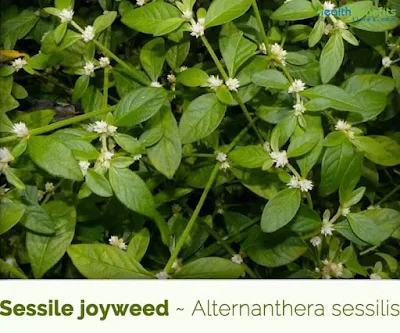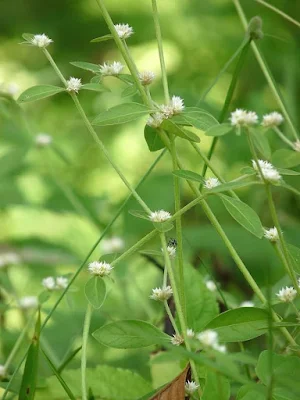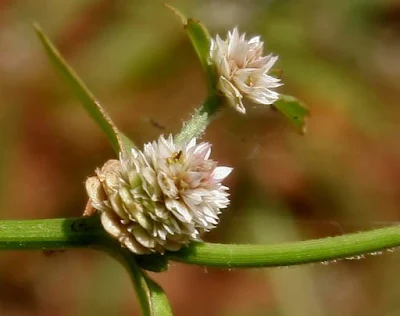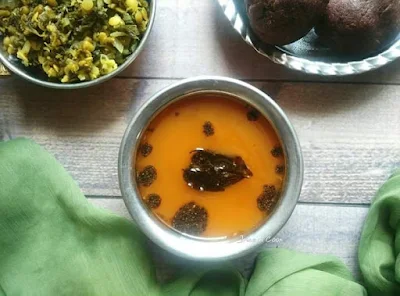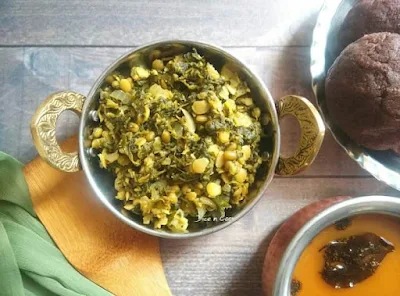Did you know that Sessile Joyweed or Honagone Soppu, a prized greens, in pink and maroon colours, is a non-toxic plant used as vegetable and in salads. and also as a herbal medicine?
Sessile Joyweed or Honagone Soppu in Kannada language, with botanical name Alternanthera sessilis in the family of Amaranthaceae, which is one of 16 tropical and subtropical species, is an aquatic plant, a common annual but greatly prized in India as greens. It is a non-toxic plant used as vegetable and in salads and as a medicinal herb in folk and Ayurvedic medicine.
The plant which grows throughout the warmer parts of India, preferably in wet places especially around tanks and ponds, is known in Indian languages as Honagone Soppu in Kannada, Ponnanganni Kerai in Tamil, Ponnaganti koora in Telugu, Koypa in Marathi, Matikaduri in Assamese, Peannaaṅaṇi in Malayalam, Sanchesak in Bengali, Gudari Saag in Hindi, and as Matsyaakshi Matsyagandha, Bahli, Matsyaduni, Gandali, Gartkalambuka, Lonika in Sanskrit; called Matsyakshi in Sanskrit as its flowers appear like eyes of a fish.
Sessile Joyweed plant grows not only wild but is also cultivated for food, rises to a maximum height of 5 in inches, and its foliage is much larger and appears to spread closer to the ground. Its colours are pink and maroon. It is a' drought enduring plant on account of its perennating habit with the portion of the stem lying underground and flowering in sessile spikes, bract and bracteoles shiny white (flowering from December until March). The young shoots contain, as main constituents, five percent protein and 16.7 mg (per 100 g) iron. Leaves also contain a good amount of alpha- and beta-tocopherols.
The plant is bitter, sweet, constipating and cooling in action. In Ayurvedic medicine it is used for its diuretic, cooling, tonic and laxative properties, as a remedy against intestinal cramps and as a cooling medicinal hair oil as hair wash. It is also used to treat snake bites. The leaves are used to prepare Kohl or Kajal (kannu kappu mai); fresh leaves are applied over eyes for styes (Inflammation of one or more sebaceous glands of an eyelid), conjunctivitis and chronic inflammation of the eyelid. It is also said to be an excellent bee forage plant. As a folk remedy, juice of its leaves mixed with garlic clove, is used for asthma, chronic cough, and intermittent fever.
In culinary use, Sessile Joyweed or Honagone Soppu saru or rasam or basaru is a popular dish in many parts of South India and is served with rice or ragi mudde (balls) or chapathi. As a stir fry or palya with green gram, it is a tasty south Indian cuisine. In Sri Lanka, the plants are shredded finely and stir fried with grated coconut and spices to make what is known as "Mukunuwenna mellum".
- Narasipur Char
